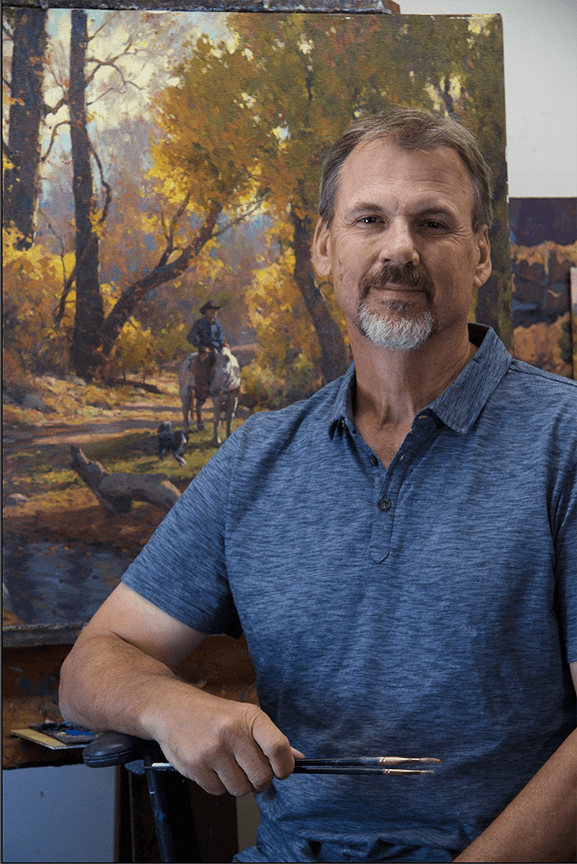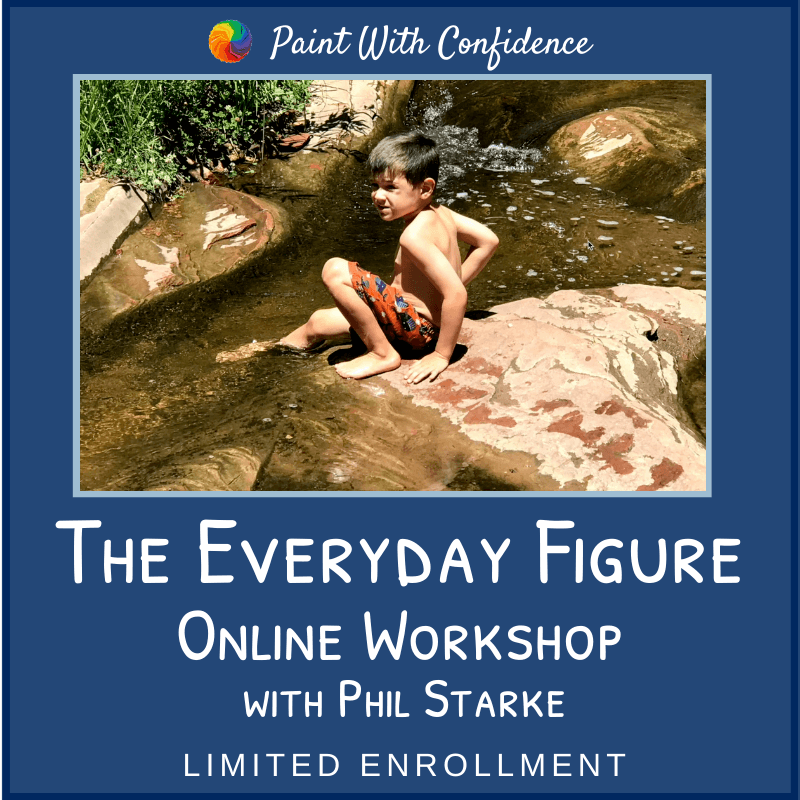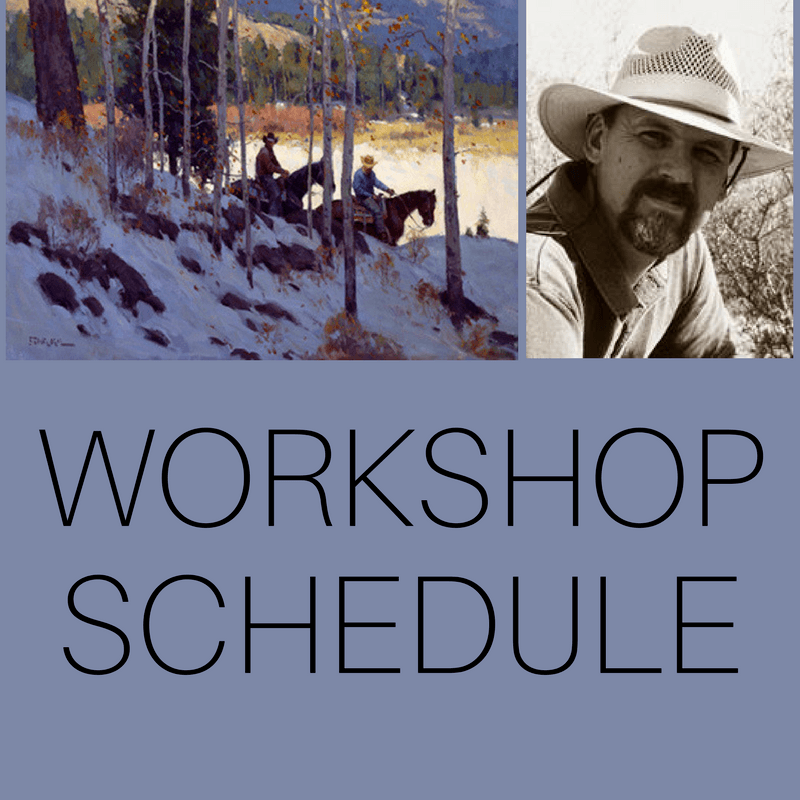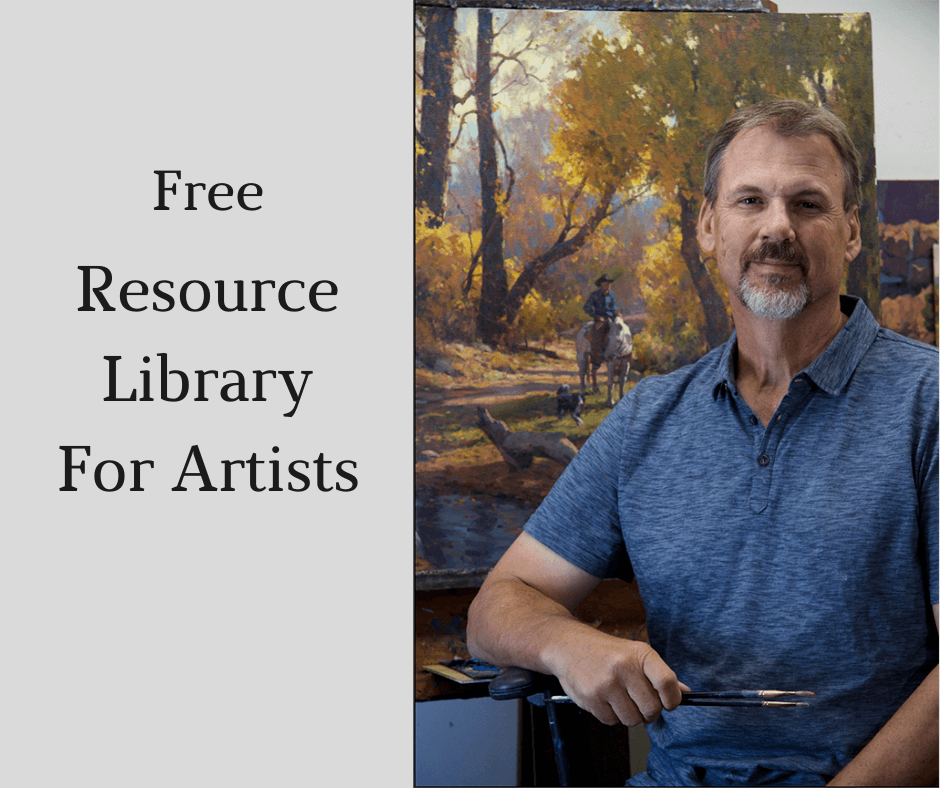Phil Starke Studio Newsletter - April 2022
Phil Starke is a professional fine artist with prestigious gallery representation, participates in national museum exhibitions, and teaches workshops and online fine art courses.

April 2022

It's been a busy start to the year. Spring has finally come to Georgia after a couple of false starts, it would warm up, then a freeze would come. Makes it hard to grow anything. Speaking of which, Shari and I are trying to grow strawberries, blueberries, blackberries, and some green stuff . Our thumbs aren’t very green so we’ll see how it goes.

Click image to enlarge

Click image to enlarge
"The Heavens Declare!" Show is April 8 - July 9. We are having a reception April 9, so if you're in the area, stop by. All the artists will be there. All the details are at this website: https://www.museumofwesternart.com/the-heavens-declare/
I will have a painting in the Oil Painters of America Show in SteamBoat Springs, CO, it will open June 3 and will run through August 27 at the Steamboat Springs Art Museum.
My painting is a 16x24 oil of "Barns Near Turnip Creek" near Blue Ridge, Georgia. It’s a beautiful area, I’m slowly working my way up to the Smoky Mountains in Tennessee and North Carolina.

Click image to enlarge
I also just sent 3 paintings to Big Horn Gallery in Tubac, AZ. A 10 x12 of Northern Arizona near Flagstaff, "Northern Arizona Cottonwoods" and a 10x12 painting from my trip to Yosemite Park, "October Gold." Also an 18x24 from northern Wyoming, "Wyoming Summer".

Click image to enlarge

Click image to enlarge

Click image to enlarge
At the end of March I sent 2 paintings to ArtzLine, an online gallery. The first was a 26 x 36 oil, "Morning Shadows, Shoshone River". And the second was from a painting trip to New Mexico, Goat farm in San Patricio NM, 9x12

Click image to enlarge

Click image to enlarge
Open Enrollment
![[Original size] Zenler Course Headers](https://www.philstarke.com/wp-content/uploads/2022/04/Original-size-Zenler-Course-Headers.png)
Enrollment Doors Open Until April 12, Midnight Eastern
“Light & Shadow Online Workshop”
ENROLLMENT IS OPEN for the Light & Shadow Online Workshop. Enrollment doors will be open until April 12, Midnight Eastern Time. Do you struggle with the strong light and shadows that come with spring & summer? This workshop focuses on how to bring more drama to your painting by understanding how to work with light and shadow. Check out all the details at this link:
https://paint-with-confidence.newzenler.com/courses/light-shadow-online-workshop-1
ARTIST AT A GLANCE
Marie Egner (1850–1940)

Marie Egner was an Austrian painter. Egner was born on 25 August 1850 in Bad Radkersburg, Austria. She took her first drawing lessons in Graz with Hermann von Königsbrunn, then went to Düsseldorf from 1872 to 1875, where she studied with Carl Jungheim. In 1882, she went to Vienna to live with her mother, but spent her summers at the art colony in Plankenberg Castle, near Neulengbach, where she took lessons with Emil Jakob Schindler until 1887. A study trip to England followed from 1887 to 1889. Shortly after, her first exhibition was held at the Vienna Künstlerhaus. She also exhibited in Germany and England.
Egner exhibited her work at The Woman's Building at the 1893 World's Columbian Exposition in Chicago, Illinois. She worked both in oils and watercolor. Along with Tina Blau and Olga Wisinger-Florian she was part of the Austrian "Stimmungsimpressionismus". Egner established an art school for women, but had to give it up in 1910, for health reasons. After World War I, she became a member of the Austrian Association of Women Artists (VBKÖ). In 1926, the group held a major retrospective exhibition of her work. After 1930, she began to lose her eyesight and withdrew from public life. She died on 31 March 1940 in Vienna.
- IMAGE 1
- IMAGE 2
- IMAGE 3
- IMAGE 4
- Image 5
- Image 6
- Image 7
- Image 8
- IMAGE 9
- IMAGE 10
- IMAGE 11
- Image 12
- Image 14
- image 15
- image 16

click to enlarge image
ARTIST TIP
BIG SHAPES AND PATTERNS MAKE A STRONGER PAINTING
When we look at nature our natural inclination is to see detail and outlines. That creates a weak painting. It's hard to compose a strong composition with detail and outline, we can’t get a big, overall feel for the picture. It is much easier to compose and design a painting with large shapes and patterns. John Carlson talks about seeing 4 to 5 large shapes to make up the whole painting (John Carlson’s Guide to Landscape Painting). It’s much easier to deal with the values when you're seeing bigger shapes, and consequently it's easier to work out color with simple values.
One of the hurdles to seeing big, simple shapes and patterns is trying to be too literal with our subjects. We identify the trees, branches, leaves, rocks as definite objects and we end up rendering which leads to detail. Try to see your subject as large abstract shapes, it makes it much easier to design the composition and work out the values.
Later in the painting we add smaller shapes and values but we shouldn’t lose those big, simple shapes we started with. If we lose the feel of the large shapes then we are adding too many value changes (detail) and we need to reestablish the big shapes and patterns.
Thumbnail drawings and small color studies are a good way to establish the shapes and patterns before starting a bigger painting.
Here are some paintings by Edgar Payne. He has plenty of detail and broken color but the big shapes and patterns are still very strong and hold the painting together.
Have you signed up to get my free Newsletter?
Don't miss out on all my great content!
If you have friends who would enjoy this newsletter, please share. Thank you!






























